#history of trade
Text
youtube
Trade in ancient Assyria: What was the name of the place of trade?
This video is about the Akkadian word related to the place of business.
The land of Assyria was located in a dry area and was not suitable for agriculture, but it was located in a suitable area geographically and it made it possible to be a bridge between Mesopotamia and Anatolia so that the merchants of different lands could take their goods to other lands.
Read More:
What does the name Ashurbanipal mean? (Video)
The oldest name for the city of Assyria (Video)
Has the Assyrian civilization always been a great empire (Video)
History of Assyrian empire’s kings: Kings who lived in tents (Video)
Who is the first builder of the temple of the god of Ashur (Video)
Follow my YouTube channel. Silent tablets documentary, short videos from ancient history.
Follow my Twitter.
#archaeology#ancient mesopotamia#mesopotamia#ancient history#akkadian#ancient iraq#akkadian language#ancient assyria#assyrian#history#brief history bites#history of assyria#history of trade#history of business#history of ancient assyria#civilizations of assyria#history of trade in assyria#history of trade in mesopotamia#history of trade in anatolia#city of assyria#assyriology#kārum#kārum ancient mesopotamia trade system#kārum ancient assyria trade system#Youtube
0 notes
Note
Can I ask why the Pinkerton agents get such a bad rap online? All I know from them comes from the Sherlock Holmes novel The Valley of Fear, where they help take down a gang of extorsionist coal miners.
So the Valley of Fear concerns a real-life incident that helped to shape the Pinkertons' reputation: their destruction of the Molly Maguires in the coalfields of Pennsylvania. An early trade union of miners of mostly Irish extraction, the leadership of the Molly Maguires were accused of murder, arson, kidnapping, and a whole host of other crimes by undercover Pinkerton agents who had infiltrated their ranks on behalf of the Philadelphia and Reading Railroad, who the Molly Maguires were fighting over wages, hours, and working conditions. Dozens were sent to jail for long stretches of time, and ten men were ultimately hanged as a result of Pinkerton testimony.

The fact that the evidence against the Maguires largely stemmed from undercover informants paid by management to disrupt and destroy their organization and other suspect sources of evidence like jaihouse snitches, and that the prosecutions against the Maguires were personally carried out by the CEO of the Philadelphia and Reading Railroad in the midst of labor conflict over who ran the coalfields, has led a lot of labor historians to conclude that the Molly Maguires were stitched up in the courts and that the Pinkertons committed wholesale perjury, acted as agents provocateur to provoke the crimes they then testified to, and caused the judicial murder of ten men.
That was just the start of their long and inglorious history of being the favorite goons of anti-union robber barons: the gun thugs who were outfought at Homestead were Pinkertons, as were the private armies who fought for capital during the Great Railroad Strike of 1877 who had to be once again bailed out by the National Guard. Likewise, their foray into bearing false witness continued with the manufactured confession that named UMW leader Big Bill Haywood as the man who arranged for the assassination of Governor Frank Steunenberg of Idaho.
So yeah, the Pinkertons have earned every last drop of their evil reputation. There is blood on their hands.
989 notes
·
View notes
Text


733 notes
·
View notes
Text

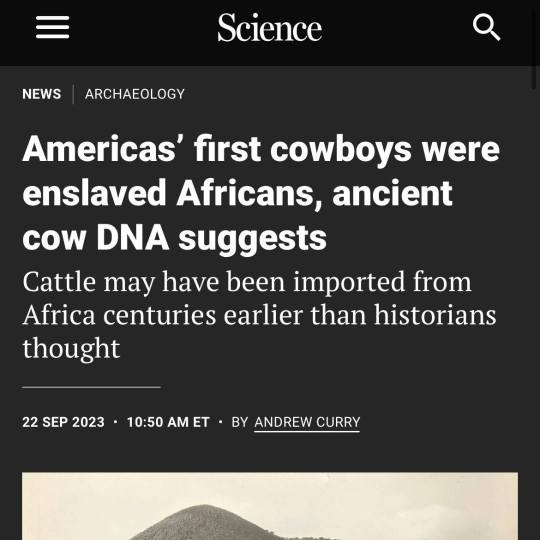
"...the first cowboys lived in Mexico and the Caribbean, and most of them were Black.
That’s the conclusion of a recent analysis of DNA from 400-year-old cow bones excavated on the island of Hispaniola and at sites in Mexico. The work, published in Scientific Reports, also provides evidence that African cattle made it to the Americas at least a century earlier than historians realized.
The timing of these African imports—to the early 1600s—suggests the growth of cattle herds may have been connected to the slave trade, says study author Nicolas Delsol, an archaeozoologist at the Florida Museum of Natural History. “It changes the whole perspective on the mythical figure of the cowboy, which has been whitewashed over the 20th century.”
x
#cowboys#african heritage#caribbean history#mexican history#dna analysis#historical perspective#slave trade#cattle herds#cultural reevaluation#17th century#black cowboys#early americas#black history
395 notes
·
View notes
Text
Cold Iron in folklore, fiction, and RPGs
'Gold is for the mistress—silver for the maid!
Copper for the craftsman cunning at his trade.'
'Good!' said the Baron, sitting in his hall,
'But Iron—Cold Iron—is master of them all!'
— Rudyard Kipling, “Cold Iron”
Folklore

Drudenmesser, or "witch-knife", an apotropaic folding knife from Germany
The notion that iron (or steel) can ward against evil spirits, witches, fairies, etc is very widespread in folklore. You hang a horseshoe over your threshold to deny entry to evil spirits, you carry an iron tool with you to make sure devils won't assault you, you place a small knife under the baby's crib to ward it from witches, and so on. Iron is apotropaic in many many cultures.
In English, we often come across passages that refer to apotropaic cold iron (or cold steel). "All uncouth, unknown Wights are terrifyed by nothing earthly so much as by cold Iron", says Robert Kirk in 1691, which I believe is the earliest example. "Evil spirits cannot bear the touch of cold steel. Iron, or preferably steel, in any form is a protection", says John Gregorson Campbell in 1901.
Words
So what is cold iron? In this context, it’s just iron. The “cold” part is poetic, especially – but not only – if we’re talking about either blades (or swords, weapons, the force of arms) or manacles and the like. It just sounds more ominous. There are “cold yron chaines” in The Fairie Queene (1596), and a 1638 book of travels tells us that a Georgian general (in the Caucasus) vowed “to make the Turk to eat cold iron”.
Green’s Dictionary of Slang defines “cold iron” as a sword, and dates the term to 1698. From 1725 it appears in Cant dictionaries (could this sense be thieves’ cant, originally? why not, plenty of words and expressions started as underworld slang and then entered the mainstream), and from ~1750 its use becomes much more common.

NGram Viewer diagram for 1600-2019.
In other contexts, cold iron is (surprise!) iron that’s not hot. So let’s talk a bit about metallurgy.
Metals

In nature, we can find only one kind of iron that’s pure enough to work with: meteoritic iron. It has to literally fall from the sky. Barring that very rare occurrence, people have to mine the earth for iron ore, which is not workable as is. To separate the iron from the ore we have to smelt it, and for that we need heat, in the form of hot charcoals. Throwing the ore on the coals won’t do much of anything, it’s not hot enough. But if we enclose the coals in a little tower built of clay, leaving holes for air flow, the temperature rises enough to smelt the ore. That’s called a bloomery.

clay bloomery / medieval bloomery / beating the bloom to get rid of the slag
What comes out of the bloomery is a bloom: a porous, malleable mass of iron (that we need) and slag (byproducts that we don’t need). But now we can get rid of the slag and turn the porous mass to something solid, by hammering the hot bloom over and over. And once the slag is off, by the same process we can give it a desired shape in the forge, reheating it as needed. This is called “working” the iron, hence “wrought iron” objects, i.e. forged.

a blacksmith in his forge, with bellows, fire, and anvil (English woodcut, 1603)
This is the lowest-tech version, possibly going back to ~2000 BCE in Nigeria. If we add bellows, the improved air flow will raise the temperature. So smelting happens faster and more efficiently in the bloomery, and so does heating the iron in the forge, making it easier to work with. And that’s the standard process from the Iron Age all through the middle ages and beyond (although in China they may have skipped this stage and gone straight to the next one).
If we make the bloomery bigger and bigger, with stronger and stronger bellows, we end up with a blast furnace, a construction so efficient that the temperature outright melts the iron, and it’s liquified enough to be poured into a mould and acquire the desired shape when it cools off. This is “cast iron”.
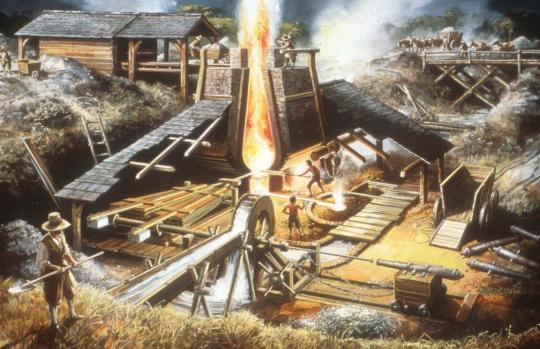
a blast furnace
So in all of this, what’s cold iron? Well, it’s iron that went though the heat and cooled off. (No heat = no iron, all you got is ore.) If it came out of a bloomery, or if it wasn’t cast, it’s by definition worked, hammered, beaten, wrought, and that happened while it was still hot.
Is there such a thing as “cold-wrought” iron? No. In fact, “working cold iron” was a simile for something foolish or pointless. A smith who beats cold iron instead of putting it in the fire shows folly, says a 1694 book on religion, so you too should choose your best tools, piety and good decorum, to educate your children and servants, instead of beating them. When Don Quixote (1605) declares he’ll go knight-erranting again, Sancho Panza tries to dissuade him, but it’s like “preaching in the desert and hammering on cold iron” (a direct translation of martillar en hierro frío).
Minor work can be done on cold iron. A 1710 dictionary of technical terms tells us that a rivetting-hammer is “chiefly used for rivetting or setting straight cold iron, or for crooking of small work; but ’tis seldom used at the forge”. Fully fashioning an object out of cold iron is not a real process – though a 1659 History of the World would claim that in Arabia it’s so hot that “smiths work nails and horseshoes out of cold iron, softened only by the vigorous heat of the sun, and the hard hammering of hands on the anvil”. [I declare myself unqualified to judge the veracity of this statement, let's just say I have doubts.] And there is of course such a thing as “cold wrought-iron”, as in wrought iron after it’s cooled off.
Either way, in the context of pre-20th century English texts which refer to apotropaic “cold iron”, it’s definitely not “cold-wrought”, or meteoritic, or a special alloy of any kind. It’s just iron.
Fiction
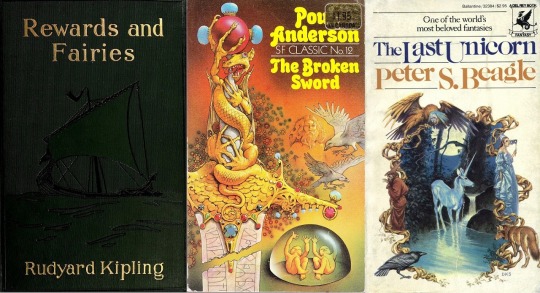
The old superstition kept coming up in fantasy fiction. In 1910 Rudyard Kipling wrote the very influential short story “Cold Iron” (in the collection Rewards and Fairies), where he explains invents the details of the fairies’ aversion to iron. They can’t bewitch a child wearing boots, because the boots have nails in the soles. They can’t pass under a doorway guarded by a horseshoe, but they can slip through the backdoor that people neglected to guard. Mortals live “on the near side of Cold Iron”, because there’s iron in every house, while fairies live “on the far side of Cold Iron”, and want nothing to do with it. And changelings brought up by fairies will go back to the world of mortals as soon they touch cold iron for the first time.
In Poul Anderson’s The Broken Sword (1954), we read:
“Let me tell you, boy, that you humans, weak and short-lived and unwitting, are nonetheless more strong than elves and trolls, aye, than giants and gods. And that you can touch cold iron is only one reason.”
In Peter S. Beagle’s The Last Unicorn (1968) the unicorn is imprisoned in an iron cage:
“She turned and turned in her prison, her body shrinking from the touch of the iron bars all around her. No creature of man’s night loves cold iron, and while the unicorn could endure its presence, the murderous smell of it seemed to turn her bones to sand and her blood to rain.”
Poul Anderson would come back to that idea in Operation Chaos (1971), where the worldbuilding’s premise is that magic and magical creatures have been reintroduced into the modern world, because a scientist “discovered he could degauss the effects of cold iron and release the goetic forces”. And that until then, they had been steadily declining, ever since the Iron Age came along.
There are a million examples, I’m just focusing on those that would have had a more direct influence on roleplaying games. However, I should note that all these say “cold iron” but mean “iron”. Yes, the fey call it cold, but they are a poetic bunch. You can’t expect Robin Goodfellow’s words to be pedestrian, now can you?
RPGs

And from there, fantasy roleplaying systems got the idea that Cold Iron is a special material that fey are vulnerable to. The term had been floating around since the early D&D days, but inconsistently, scattered in random sourcebooks, and not necessarily meaning anything else than iron. In 1st Edition’s Monster Manual (1977) it’s ghasts and quasits who are vulnerable to it, not any fey creature. Devils and/or fiends might dislike iron, powdered cold iron is a component in Magic Circle Against Evil, and “cold-wrought iron” makes a couple of appearances. For example, in AD&D it can strike Fool’s Gold and turn it back to its natural state, revealing the illusion.
Then Changeling: The Dreaming came along and made it a big deal, a fundamental rule, and an anathema to all fae:
Cold iron is the ultimate sign of Banality to changelings. ... Its presence makes changelings ill at ease, and cold iron weapons cause horrible, smoking wounds that rob changelings of Glamour and threaten their very existence.... The best way to think about cold iron is not as a thing, but as a process, a very low-tech process. It must be produced from iron ore over a charcoal fire. The resulting lump of black-gray material can then be forged (hammered) into useful shapes.
— Changeling: The Dreaming (2nd Edition, 1997)
So now that we know how iron works, does that description make sense? Well, if we assume that the iron ore is unceremoniously dumped on coals, it does not. You can’t smelt iron like that. If we assume that a bloomery is involved even though it’s not mentioned, then yes, this is broadly speaking how iron’s been made since the Iron Age, and until blast furnaces came into the picture. But the World of Darkness isn’t a pseudo-medieval setting, it’s modern urban fantasy. So the implication here is that “cold iron” is iron made the old way: you can’t buy it in the store, someone has to replicate ye olde process and do the whole thing by hand. Now, this is NOT how the term “cold iron” has been used in real life or fiction thus far, but hey, fantasy games are allowed to invent things.
Regardless, 3.5 borrowed the idea, and for the first time D&D made this a core rule. Now most fey creatures had damage reduction and took less damage from weapons and natural attacks, unless the weapon was made of Cold Iron:
“This iron, mined deep underground, known for its effectiveness against fey creatures, is forged at a lower temperature to preserve its delicate properties.”
— Player’s Handbook (3.5 Edition, 2003)
Pathfinder kept the rule, though 5e did not. And unlike Changeling, this definition left it somewhat ambiguous if we’re talking about a material with special composition (i.e. not iron) or made with a special process (i.e. iron but). The community was divided, threads were locked over this!
So until someone points me to new evidence, I’ll assume that the invention of cold iron as a special material, distinct from plain iron, should be attributed to TTRPGs.
#long post#cold iron#d&d#Changeling: The Dreaming#World of Darkness#Peter S. Beagle#The Last Unicorn#Rudyard Kipling#Poul Anderson#The Broken Sword#how to rogue#pathfinder#rogues in fiction#Operation Chaos#rogue superstitions#words of the trade#thieves' cant#ad&d#d&d history#1st edition#fey#3.5#fluff#trs
344 notes
·
View notes
Text

#civil rights#signal boost#human rights#human trafficking#Slavery#slave trade#history#current events#free palestine#palestine#gaza under attack#gaza strip#genocide#ethnic cleansing#crimes against humanity#international law#khaled beydoun
319 notes
·
View notes
Text
FMA fic I'm never going to write:
Hoenheim's lifespan and continued existence is entirely tied to the hundreds of thousands to possibly millions of dead his soul eats off of, slowly leeching life from the dead kingdom of Xerxes.
...It stands to reason, then, when begetting life, that spiritual artefacts make themselves known in the begotten sons of the dead. There are only four that can claim true heritage of Xerxes— the immortal, the synthesized man, and the heirs to the memories of a long-gone people.
Or. Well. Gone in body, certainly. But that's hardly stopped anyone from wanting to step up and parent.
#Trisha's sons have so many imaginary friends#and a secret language#and trade skills...#...and forgotten histories...#.........and previously lost to time alchemical practices.........#do the brothers know? NO. they're SEVEN. and FIVE.#do they eventually get more context that 'this isn't normal chief' and get REAL nervous???? ABSOLUTELY#I think also by process of logic this means the boys are kinda immortal. oops!#'WE GOTTA FIND A PHILOSOPHER'S STONE!!' (could have regrown limbs this whole time)#fma#fullmetal alchemist#this bad boy's been on my mind since. like. 2018
128 notes
·
View notes
Text

#antisemitism#israel#jewish#muslim#Judaism#arab superiority#arab supremacy#arab slave trade#arab israeli conflict#arab men#middle east#al jazeera#education#historical revisionism#history#jew in progress#propaganda#palestine#gaza#fuck sharia law#sharia#social issues#social justice#social commentary#free palestine#world news#war#news#politics#trends
102 notes
·
View notes
Text
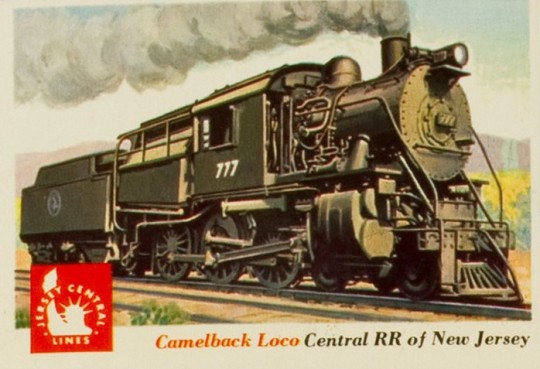


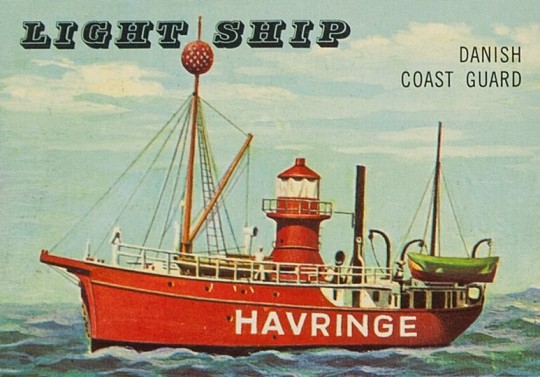


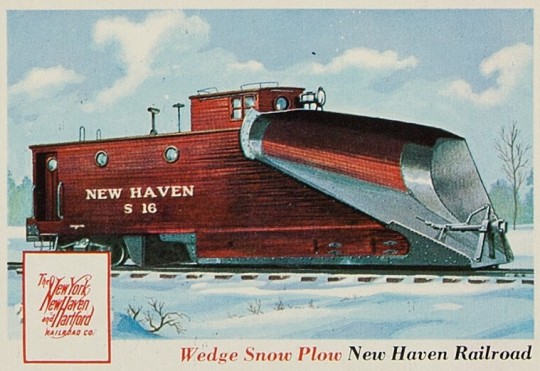


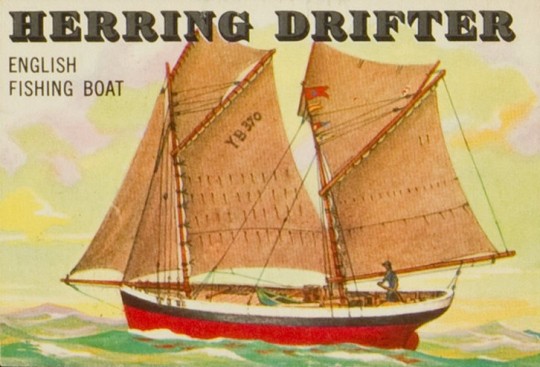



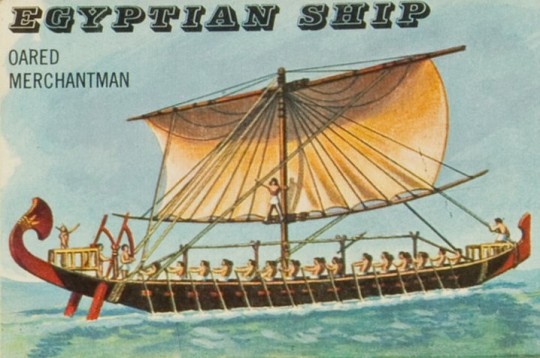
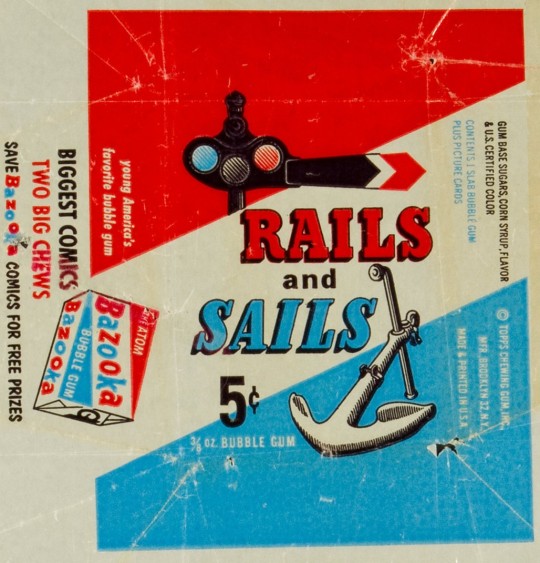
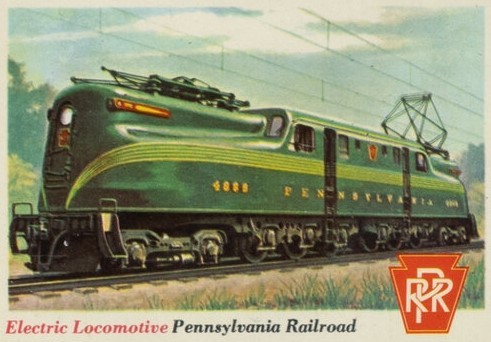




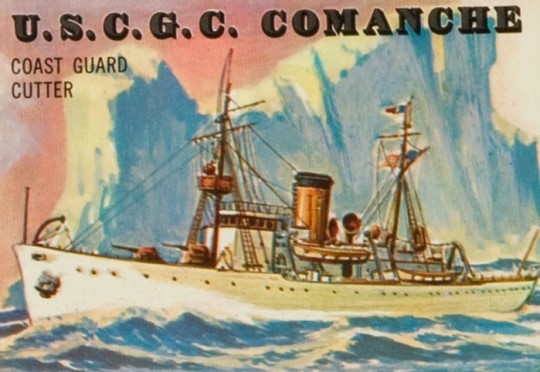


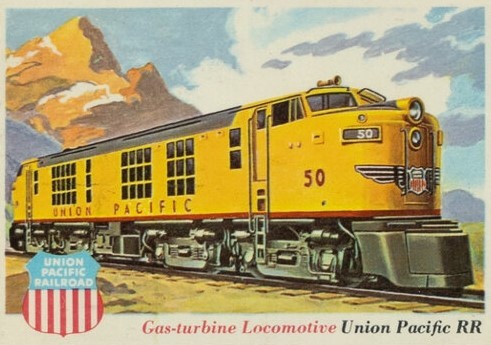





Rails and Sails trading cards - Topps (1955)
#rails and sails trading cards#vintage trading cards#topps trading cards#transportation history#vintage trains#vintage boats#railroad#locomotives#sail boat#ships#1950s#1955
170 notes
·
View notes
Text
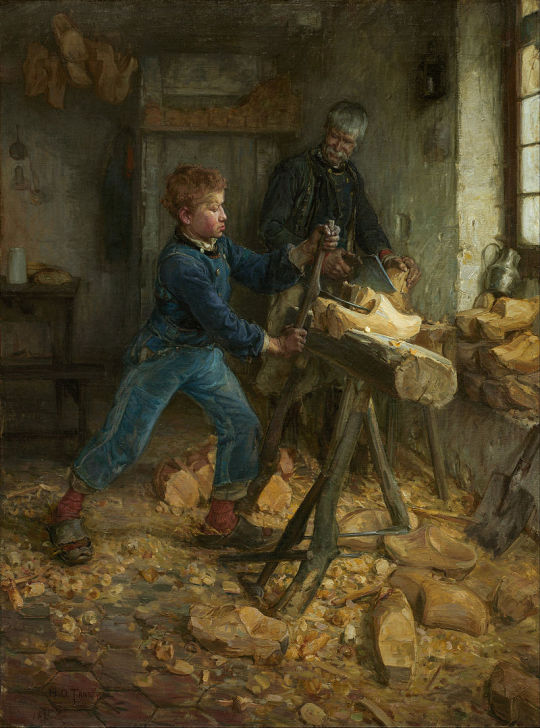
Henry Ossawa Tanner (1859-1937)
"The Young Sabot Maker" (1895)
Oil on canvas
Located in the Nelson-Atkins Museum of Art, Kansas City, Missouri, United States
The painting depicts an older man proudly watching a boy push with his weight against the crossbar handle of an auger to carve a sabot, or wooden shoe.
#paintings#art#artwork#genre painting#genre scene#henry ossawa tanner#oil on canvas#fine art#nelson atkins museum of art#museum#art gallery#american artist#african american artist#skilled trades#wood carving#shoes#history#clothing#clothes#male portrait#portrait of a man#portrait of a boy#1890s#late 1800s#late 19th century#a queue work of art
68 notes
·
View notes
Video
not having to work in a factory as a child
#tiktok#british history#social housing#trade unions#NHS#verso books#labor history#working class history#working class#history#labor vs capital#labor movements#labor movement#collective action
347 notes
·
View notes
Note
Since SAG AFTRA has also gone on strike, does that mean the negotiations between the WGA and executives went poorly?
This is a great question, because it allows me to do some educating about labor law!
Today's topic: "bad faith" bargaining.

While often honored more in the breach than the observance, U.S labor law requires employers to engage in collective bargaining with unions, once those unions have been recognized as the "exclusive representative" of the workers via card check or union election.
Because Leon Keyserling and Senator Robert Wagner were not idiots and could see it coming that employers would drag out negotiations in order to try to destroy the union through attrition, the Wagner Act of 1935 required employers to not just negotiate with unions, but to negotiate "in good faith" and made it a violation of the law to negotiate in bad faith.
Two major forms of negotiating in bad faith are "dilatory tactics" (deliberately using the procedures of collective bargaining and labor law more generally to delay the process) and "surface bargaining" (where the employer goes through the motions of meeting with the union, but refuses to engage in substantive discussions). This can include stuff like sending representatives who don't have authority to negotiate, refusing to schedule sessions or trying to unilaterally control the timeline, not asking questions or engaging in back-and-forth discussion, refusing to discuss topics that are germane to conditions of employment, and so forth.
These kinds of actions are considered Unfair Labor Practice violations and the NLRB can issue "cease and desist" orders and "affirmative bargaining" orders, as well as some rather creative "special remedies" that get around the Wagner Act's lack of monetary penalties. As that suggests, however, part of the problem is that because the Wagner Act doesn't have significant monetary penalties, a lot of companies will just budget a line item for breaking the law and treat that as the cost of doing business, while using the same dilatory tactics to appeal NLRB decisions through the courts in the hope that they can outlast the union. (This is why one of the most effective labor law reforms that could be passed in a Democratic Congress would be adding compounding daily monetary penalties and streamlining the ULP process in both the NLRB and the courts.)
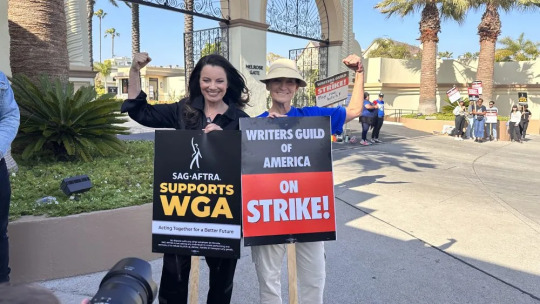
From what I've read of the negotiations, I think there's a pretty clear cut case that AMPTP engaged in surface bargaining and used dilatory tactics, with the intent to run out the clock and thus provoke a strike in which they believed economic pressure would force the union into surrender, essentially a lock-out without declaring a lock-out.
I think it's backfired on them. A big part of AMPTP's strategy for winning that strike was to divide-and-rule - hence why they came to an agreement with the Director's Guild - by getting through the lean months by filming and releasing shows and movies with already-completed scripts. Now that SAG-AFTRA is on strike, that lifeline of content is immediately cut - which means AMPTP is going to run out of revenue in the near future, which as WGA leaders have pointed out means bad quarterly earnings reports, which means stock prices tank, which means investors and boards of directors get angry and executives become the ones facing the prospect of losing their jobs at the same time that all the compensation they've structured as stock options to avoid taxes loses value.
476 notes
·
View notes
Text

Dads
#i love love#zukka#may or may not have to do with a tweet i tweeted#i miss themmmmmmmm#edit i forgot to mention the beads. how could i. it could be seen as anything but i have been emotional about se asian history so#ok prehistoric time. se asian traded w india and india has these orange beads#they are just. so pretty. I just have to include them#THERE WERE ALSO TINY TIGERS. more likely to come from china though#i love. human history. so much
2K notes
·
View notes
Video
youtube
The kindling that will start a thousands years empire.
This is basically a revamped version of the DDD series I made on the KTB history a long while ago, since some more correct info has been released with the release of Field Guide to KTB, just never got to it yet with the sheer amount of stuff I worked on back then.
Well, better late than never!
#youtube#lancer rpg#ttrpg#Drink Deep & Descend#history#lore#story#Karrakin Trade Baronies#turns out concentrating your political power in the midst of a crisis is in fact a bad move
88 notes
·
View notes
Text
You ever be totally immersed in a story and then you come across a line about a subject and you realize you know more about this subject than the author and what the author wrote down was completely wrong and it's not even that the author didn't do research so much as the author didn't even think this was something that even needed to be researched? And it drives you absolute cuckoo bananas?
#pretty sure vellum is pretty flame resistant since it's leather and not paper#why are you doing this to me Phong Nguyen#also I'm less clear on this point I'll have to look up the history of manuscripts but did first century Vietnam even have vellum books?#like Asia had access to tree paper well before Europe did i think parchment and vellum were European in nature#after the decline of the papyrus trade following the collapse of the Roman empire#and needing something that was more durable in wetter climates than the Mediterranean anyway#i know europe got tree paper from China (possibly via Türkiye? idr) but i don't know if europe exported vellum and parchment#given the advent of tree fiber paper in Asia it doesn't seem like there'd be much need for vellum manuscripts in 1 C.E Vietnam#*first century C.E not 1 C.E#wait a minute#did EUROPE even have vellum by First Century C.E??#i.. i have to go look this up now wtf...
55 notes
·
View notes